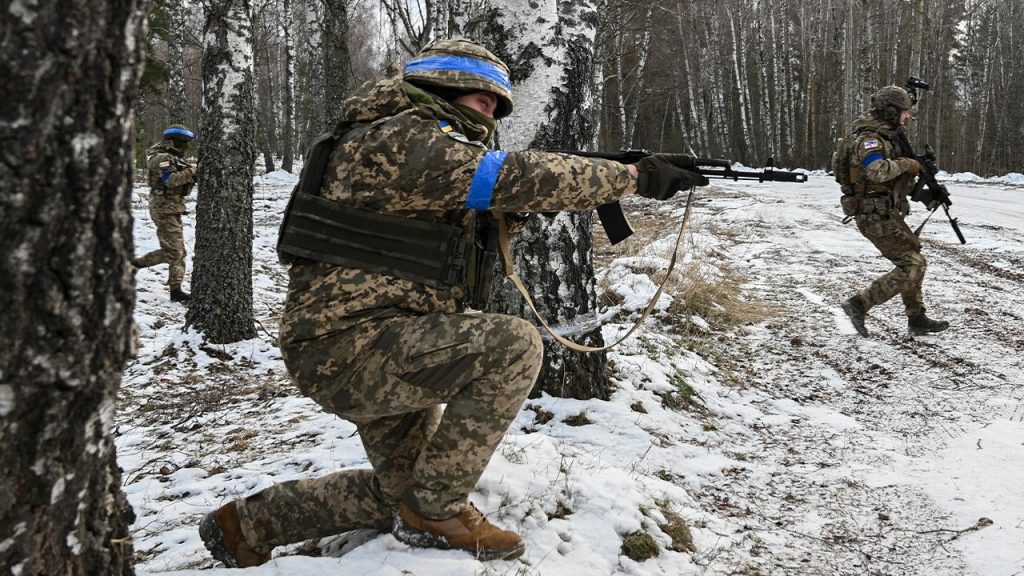Russia’s relentless assault on Ukraine’s energy infrastructure continued into its third winter, marking a calculated strategy to cripple the nation’s ability to withstand the harsh cold. On Friday, Moscow unleashed a barrage of approximately 90 missiles and 200 drones, primarily targeting power plants in western Ukraine, including the Lviv, Ternopil, and Ivano-Frankivsk regions. This massive attack, one of the largest to date, inflicted significant damage on DTEK, Ukraine’s largest private energy company. While the full extent of the damage remains to be assessed, initial reports indicate widespread power outages, particularly in the Ternopil region, where at least half the area was plunged into darkness. This latest assault marks the twelfth mass attack on Ukraine’s energy sector this year and the ninth targeting DTEK facilities specifically, underscoring Russia’s persistent efforts to undermine Ukraine’s resilience.
The attack follows recent intelligence reports suggesting that Russia might be preparing to deploy its newly developed Oreshnik ballistic missile against Ukraine. While U.S. officials have downplayed the missile’s potential to alter the battlefield dynamics, they acknowledge its use as another tool of terror aimed at demoralizing the Ukrainian population. This potential escalation coincides with growing concerns about Russia’s incremental gains in Donetsk, particularly near the strategically important town of Pokrovsk. Capturing Pokrovsk would grant Russia access to vital supply routes leading to Zaporizhzhia, further solidifying their control over occupied territories. Despite Ukrainian forces successfully repelling Russian advances in other areas of Donetsk, such as Kurakhove, the intensifying fighting around Pokrovsk highlights the precarious situation on the ground.
The battle for Pokrovsk holds significant implications for the war’s trajectory. Its loss would not only disrupt Ukrainian supply lines but also weaken Kyiv’s defensive posture in Donetsk, jeopardizing their efforts to prevent Russia from seizing the entire region. The escalating conflict in Donetsk unfolds against a backdrop of political uncertainty in the United States regarding future aid to Ukraine. The incoming Trump administration’s stance on continued support remains unclear, raising concerns about the sustainability of U.S. assistance in the long term. President-elect Trump’s recent criticism of Ukraine’s use of U.S.-supplied ATACMS missiles to strike targets within Russia adds further complexity to the situation and underscores the delicate balance of international involvement in the conflict.
President-elect Trump’s comments in a recent interview highlighted his concerns about the potential for escalation arising from Ukraine’s cross-border strikes into Russian territory. He characterized Ukraine’s decision, presumably authorized by the Biden administration, to target Russian military infrastructure as a “foolish decision” and a “major escalation.” This statement reflects a divergence in views on the strategic implications of such actions and underscores the potential for shifts in U.S. policy towards the conflict under the new administration. The debate surrounding Ukraine’s right to strike within Russia touches upon fundamental questions about the nature of self-defense and the permissible use of force in an ongoing conflict.
The decision by the Biden administration in November to permit Ukraine’s use of U.S.-supplied missiles for strikes inside Russia marked a significant turning point in the conflict. This reversal of longstanding policy followed years of appeals from Kyiv, arguing for the right to target Russian military assets used to launch attacks against Ukrainian civilians and infrastructure. President Zelenskyy and various U.S. security experts have consistently advocated for this strategy, asserting that striking Russian weapons depots and military positions is crucial to turning the tide of the war. This perspective emphasizes the need to disrupt Russia’s ability to sustain its offensive operations and degrade its capacity to inflict further harm on Ukraine.
The ongoing attacks on Ukraine’s energy grid, coupled with the intensifying fighting in Donetsk and the uncertainty surrounding future U.S. support, paint a grim picture for Ukraine as winter sets in. The humanitarian consequences of widespread power outages in freezing temperatures are dire, posing a significant threat to civilian populations. The strategic implications of Russia’s gains in Donetsk raise concerns about further territorial losses and the potential for a prolonged conflict. Finally, the shifting political landscape in the United States introduces an element of uncertainty regarding the continuation of crucial military and financial aid, leaving Ukraine vulnerable at a critical juncture in the war. The convergence of these factors presents a formidable challenge for Ukraine and underscores the urgent need for sustained international support to mitigate the escalating humanitarian crisis and ensure its ability to defend itself against ongoing Russian aggression.










